- Guide
- Flight in High Winds
- How to Choose Your First Drone
- How to Fly a Drone for Beginners
- Insurance Guide
- Maximize Performance
- Maintenance Tips
- Optimize Flight Time
- Optimize Payload Capacity
- Part 107 & RPAS How to Guide
- Understanding Drone Terminology
- Understanding FAA Drone Regulations
- Safety Guidelines
- Surveying Guide
Top Guides
Drone Safety Guidelines and Best Practices
Table Of Contents
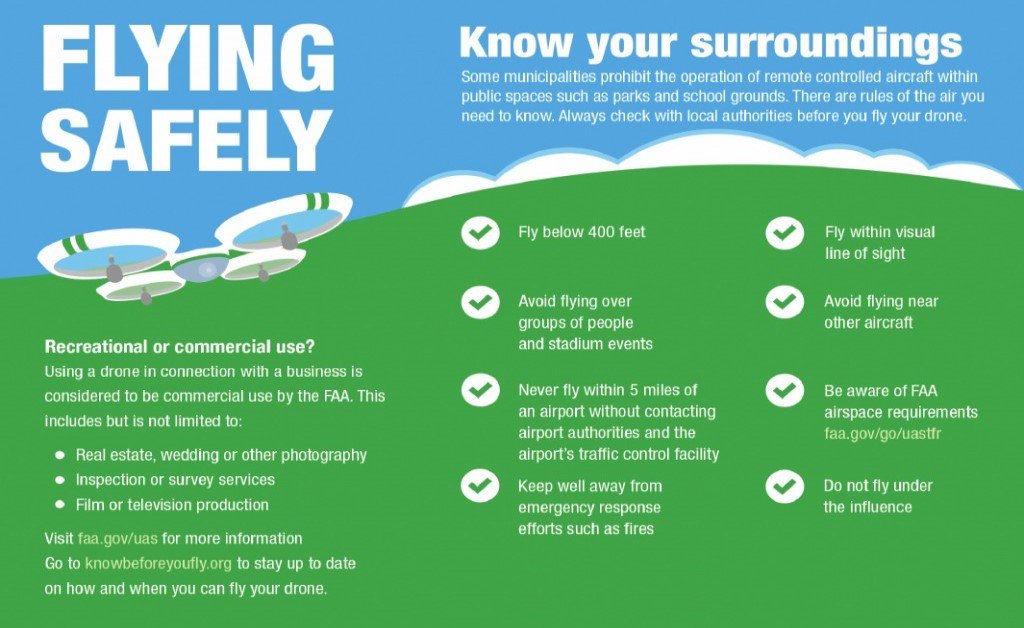
Fly smart and stay safe out there! Interested in drone safety? Discover free resources to learn the basics here. Ready to earn your FAA commercial drone certificate? Start preparing today right here.
Drone Safety Guidelines and Best Practices- What Are They?
Drones have revolutionized the way we explore, capture, and interact with the world around us. However, with this cutting-edge technology comes the responsibility of drone safety. Whether you’re a recreational flyer capturing breathtaking landscapes or a professional conducting critical inspections, safety should always be your top priority.
Drone Safety Article Guide
- Drone Safety Introduction
- Pre-Flight Safety Checks
- Understanding Airspace and Regulations
- Safe Flying Practices
- In-Flight Safety
- Post-Flight Best Practices
- Building a Safety Mindset
- Conclusion
- FAQs
The risks associated with drones—such as collisions, loss of control, and privacy violations—can have serious consequences. Adhering to safety guidelines not only protects people and property but also ensures compliance with local regulations, safeguarding your right to fly.
This guide is designed to provide practical advice for every stage of drone operation, from pre-flight preparations to in-flight practices and post-flight maintenance. We’ll also cover regulatory considerations, environmental awareness, and tips for cultivating a safety-first mindset. Whether you’re a beginner or an experienced pilot, these best practices will help you fly responsibly and confidently, fostering a safe environment for everyone sharing the skies.
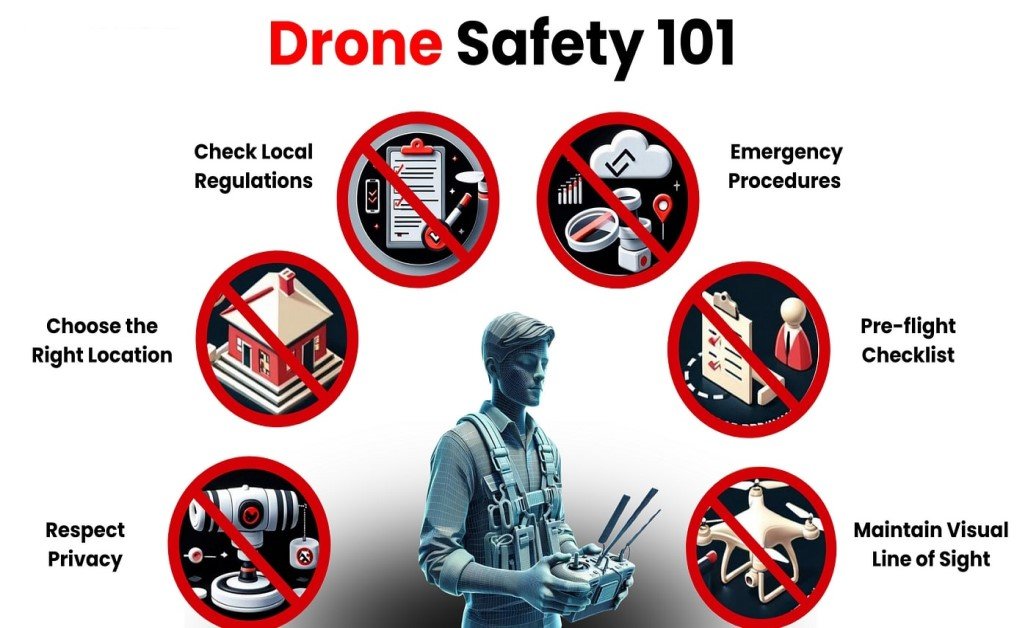
Pre-Flight Safety Checks for Drone Safety
Ensuring a safe and successful flight begins long before your drone takes off. A thorough pre-flight checklist helps identify potential issues, minimize risks, and prepare you for unexpected challenges. Here’s a detailed look at essential pre-flight safety checks:
Inspect Your Drone to Ensure Drone Safety
Carefully examine your drone for physical damage or wear. Look for:
- Cracks or damage to the frame or arms.
- Loose or worn-out propellers. Replace any that show chips, cracks, or imbalance.
- Securely fastened components, including the battery and camera.
Regular inspection can prevent mid-flight malfunctions that lead to crashes or damage.
Battery Health
- Verify that the battery is fully charged and free of swelling or damage.
- Check battery connections for dirt or debris that might disrupt the power supply.
- Carry spare batteries for extended flights, ensuring they are properly stored and charged.
A healthy battery is crucial for maintaining flight time and avoiding sudden power loss.
Firmware Updates
Ensure that the drone, remote controller, and companion app are running the latest firmware versions. Manufacturers often release updates to fix bugs, improve performance, and ensure compliance with new regulations. Skipping updates could lead to operational issues or loss of features.
Controller and Signal Check
- Pair your drone with the remote controller before take-off to verify a strong and stable connection.
- Check the controller’s battery level and functionality, including joysticks, buttons, and antennas.
- Test the signal range in your environment to ensure reliable communication.
Strong controller connectivity is vital for maintaining command during flight.
Calibrate Sensors
Calibrating your drone’s sensors is essential for accurate flight performance. Key calibrations include:
- Compass Calibration: Aligns the drone’s compass with the Earth’s magnetic field, preventing navigation errors.
- IMU (Inertial Measurement Unit) Calibration: Ensures stability by calibrating the accelerometer and gyroscope.
- GPS Lock: Confirm a strong GPS signal for accurate positioning and waypoint navigation.
Sensor calibration is especially important when flying in a new location or after transporting your drone over long distances.
Weather and Environment Check
- Check the local weather forecast for wind, rain, or extreme temperatures that could affect flight safety.
- Ensure sufficient visibility and avoid flying in foggy or dimly lit conditions.
- Choose a take-off area free of obstacles, such as trees, power lines, or uneven surfaces.
Flying in favorable weather and an obstacle-free environment enhances safety and control.
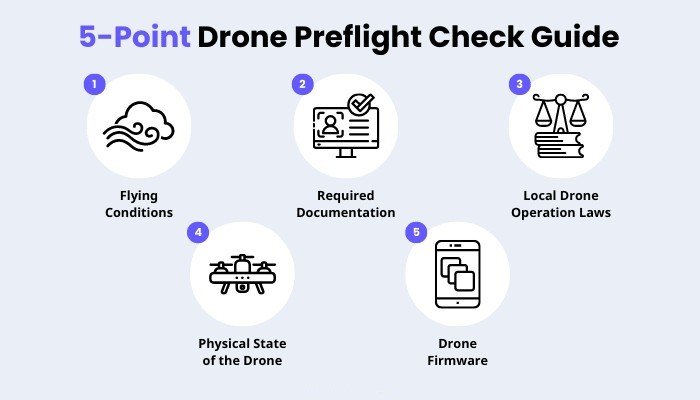
Flight Plan Review to Ensure Drone Safety
- Map out your intended flight path, considering potential hazards and no-fly zones.
- Program any waypoint navigation or pre-set flight modes.
- Double-check local airspace restrictions and obtain any necessary permissions.
A clear flight plan reduces the risk of unexpected complications.
Emergency Protocols
Before take-off, familiarize yourself with your drone’s emergency features, such as:
- Return to Home (RTH): Ensure it’s set to a safe altitude to avoid obstacles.
- Pause Button: Understand how to halt your drone mid-flight in case of emergencies.
- Manual Landing: Practice manual landing techniques in case automated systems fail.
Being prepared for emergencies can save your drone and prevent accidents.
By completing these pre-flight checks, you set the foundation for a safe and enjoyable flight. Regular adherence to this routine ensures your equipment operates optimally and minimizes risks to people, property, and the drone itself.
Understanding Airspace and Regulations
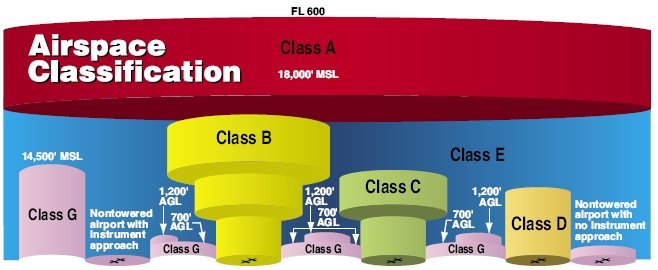
Operating a drone responsibly requires a solid understanding of the airspace you’re flying in and the regulations governing it. Failing to adhere to these rules can lead to fines, equipment confiscation, or even accidents. Here’s a comprehensive guide to navigating airspace and staying compliant:
Know Your Airspace
Airspace is categorized into controlled and uncontrolled zones, each with specific rules:
- Controlled Airspace: Includes areas around airports and high-traffic regions. Flying here often requires prior authorization from air traffic control.
- Uncontrolled Airspace: Areas with minimal air traffic, where drone operations are generally permitted without special permissions.
Use tools like drone apps or maps provided by aviation authorities to determine the airspace classification in your location.
No-Fly Zones
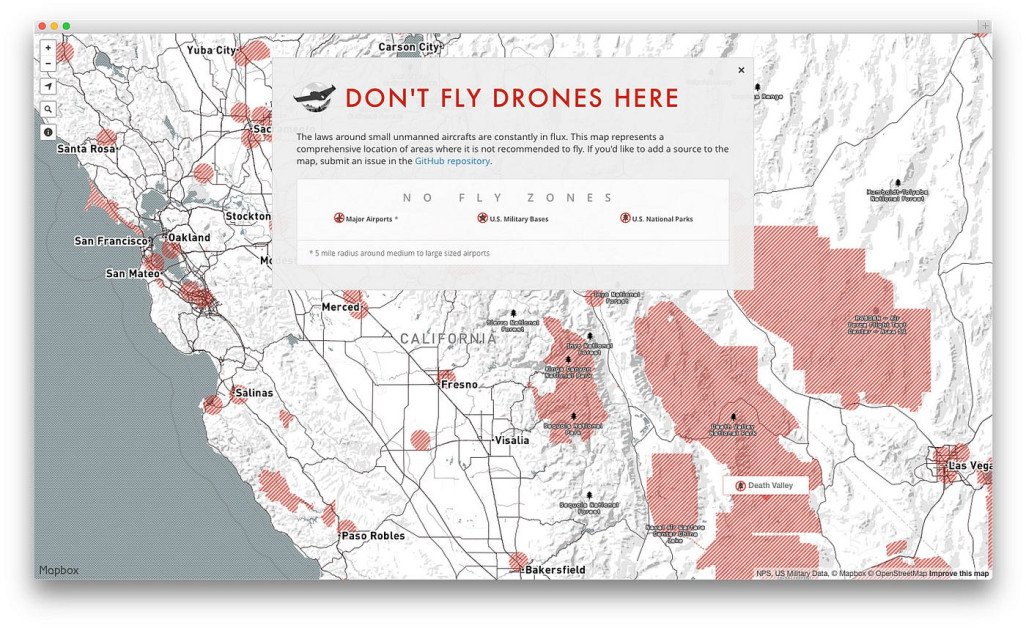
No-fly zones are designated areas where drone operations are restricted or prohibited. Common examples include:
- Airports and military bases.
- National parks and wildlife reserves (in many countries).
- Critical infrastructure, such as power plants or government buildings.
Many drones have built-in geofencing systems to prevent flights in these areas, but pilots should independently verify restrictions before flying.
Altitude Limits
Most countries impose altitude restrictions for drones to prevent interference with manned aircraft. The standard limit is 400 feet (120 meters) above ground level. Staying below this threshold ensures you remain in safe airspace for unmanned vehicles.
Remote ID Compliance
Remote ID requirements are becoming the standard in many regions. Remote ID acts as a digital license plate, broadcasting the drone’s identity, location, and operator information. Ensure your drone is equipped or upgraded to meet these requirements if mandated in your area.

Visual Line of Sight (VLOS)
Flying within Visual Line of Sight means keeping the drone within your unaided vision at all times. This is a fundamental safety rule in most jurisdictions, ensuring pilots can maintain control and avoid collisions. BVLOS (Beyond Visual Line of Sight) operations require special permissions and advanced training.
Airspace Authorization
In controlled airspace or for specific operations, pilots may need to request authorization from relevant authorities, such as the FAA in the United States or Transport Canada.
- Low Altitude Authorization and Notification Capability (LAANC): A system in the U.S. for quickly obtaining airspace permissions.
- Manual Authorization: Required for more complex operations, involving detailed flight plans and risk assessments.
Temporary Flight Restrictions (TFRs)
Temporary Flight Restrictions are short-term airspace closures for specific events or emergencies, such as:
- VIP movements (e.g., a presidential visit).
- Major sporting events.
- Natural disaster response areas.
Drone pilots must stay updated on TFRs through official aviation notices or drone apps.
Privacy Laws
In addition to airspace regulations, privacy laws govern where and how you can fly. Avoid recording or photographing private property without consent to respect privacy and avoid legal issues.
International Operations
When traveling with your drone, research the drone regulations of your destination country. Rules vary significantly, and some countries may require registration or impose strict restrictions on foreign drone pilots.
Registration and Licensing
Many countries require drones above a certain weight to be registered with aviation authorities. Additionally, professional or commercial pilots may need specific certifications, such as:
- Part 107 Certification in the United States for commercial operators.
- Basic or Advanced Pilot Certificate in Canada.
Understanding and complying with these requirements ensures your operations are both legal and professional.
Air Traffic Awareness
Drone pilots must always yield the right of way to manned aircraft. Listen for sounds of approaching planes or helicopters and descend immediately if needed. Be especially cautious when flying near small airports or airstrips.
By understanding airspace classifications, staying informed about regulations, and planning your flights responsibly, you can operate safely while enjoying the freedom that drones provide. Adhering to these principles not only keeps you compliant but also promotes a positive image of the drone community.
Safe Flying Practices for Drone Safety
Once your pre-flight checks are complete and you’ve confirmed compliance with airspace regulations, it’s time to focus on maintaining safe flying practices during your operation. These best practices minimize risks to people, property, and your drone, ensuring a smooth and enjoyable flight.
Weather Awareness
- Avoid Adverse Conditions: Do not fly in high winds, heavy rain, snow, or fog. These conditions can destabilize your drone and impair visibility.
- Monitor Wind Speeds: Even on seemingly calm days, high-altitude winds may be stronger than at ground level. Check your drone’s wind resistance rating.
- Temperature Considerations: Extreme cold can reduce battery life, while excessive heat can cause overheating. Avoid flying in extreme temperatures whenever possible.
Crowded Areas
Flying over people or large gatherings is risky and often prohibited by regulations. A sudden malfunction could result in injuries or property damage. Opt for open, sparsely populated areas for safe operations.
Maintain a Safe Distance
- From People: Keep a minimum distance of 30 meters (100 feet) unless authorized for close proximity flights.
- From Buildings and Vehicles: Avoid flying too close to structures or moving vehicles to prevent accidents and ensure stable signal transmission.
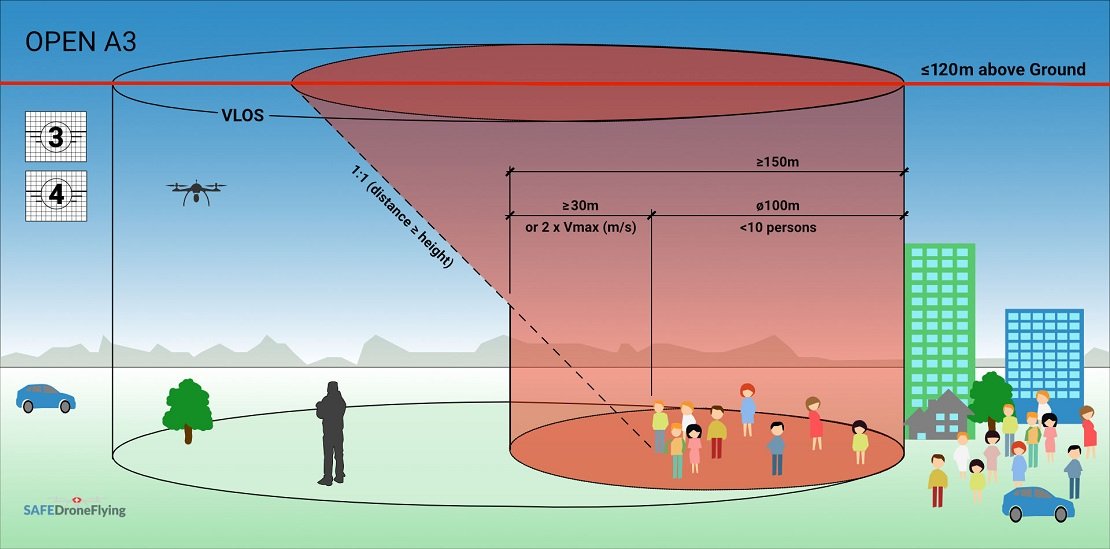
Avoid Wildlife Disturbance
- Respect nature by keeping your drone away from wildlife habitats.
- Avoid chasing or startling animals, as this could cause harm to both the wildlife and your drone.
- Be mindful of local laws protecting wildlife, as violating them could result in fines or legal action.
Controlled Take-Offs and Landings
- Choose flat, clear surfaces for take-offs and landings.
- Avoid launching your drone from unstable or cluttered areas, which can lead to tip-overs or crashes.
- Maintain a steady hand during landings to ensure a smooth touchdown.
Fly Within Your Skill Level
- Practice basic maneuvers in open areas before attempting advanced moves or flying in tight spaces.
- Avoid risky stunts or high-speed flights unless you have the experience and the environment allows for it.
Battery and Signal Monitoring
- Continuously monitor your drone’s battery life. Plan to land with at least 20% battery remaining as a safety margin.
- Keep an eye on signal strength, especially in areas with potential interference, such as urban environments or near metal structures.
Obstacle Awareness
- Use your drone’s obstacle avoidance system if equipped, but do not rely solely on it. Manually scan the flight area for potential hazards like power lines, trees, or poles.
- Be extra cautious when flying backward, as many drones lack rear-facing obstacle detection.
Fly Responsibly Around Other Aircraft
- Always yield to manned aircraft, such as helicopters or planes.
- Avoid flying near airports, heliports, or active airstrips unless authorized.
Practice Emergency Maneuvers
- Familiarize yourself with emergency features such as Return to Home (RTH) and Pause buttons.
- Practice manual landing techniques in case of automated system failures.
- Stay calm and act quickly if your drone loses signal or encounters unexpected obstacles.
Night Operations
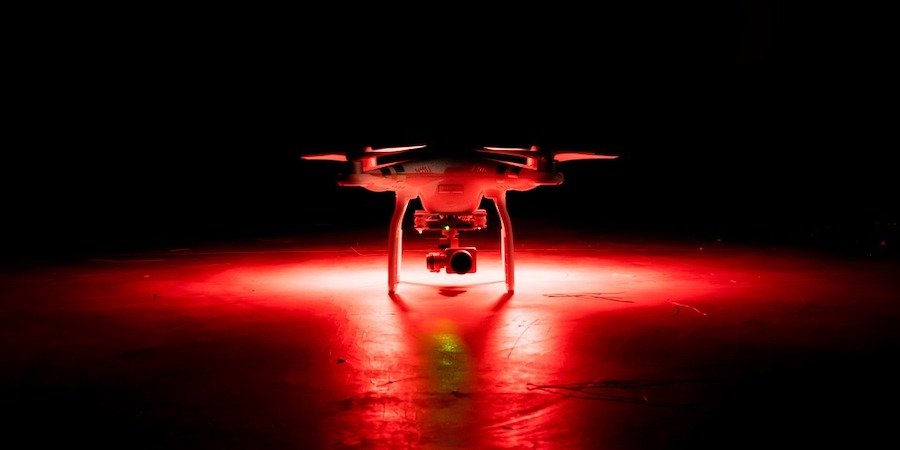
- Use appropriate lighting on your drone to maintain visibility during night flights.
- Confirm that night operations are permitted in your area and follow additional regulatory requirements, such as obtaining waivers or permissions.
Environmental Awareness
- Avoid creating noise disturbances, especially in residential or sensitive areas.
- Be mindful of environmental impact, such as leaving no trace in natural areas or avoiding low flights over crops.
By adhering to these safe flying practices, you can significantly reduce the likelihood of accidents and create a positive experience for yourself and those around you. Safe flying not only protects your investment but also upholds the reputation of responsible drone operators worldwide.
In-Flight Drone Safety
Once your drone is in the air, maintaining in-flight safety is paramount. This involves constant awareness of your surroundings, proactive monitoring of your drone’s performance, and the ability to respond quickly to unexpected situations. Here’s how to ensure a safe and controlled flight:
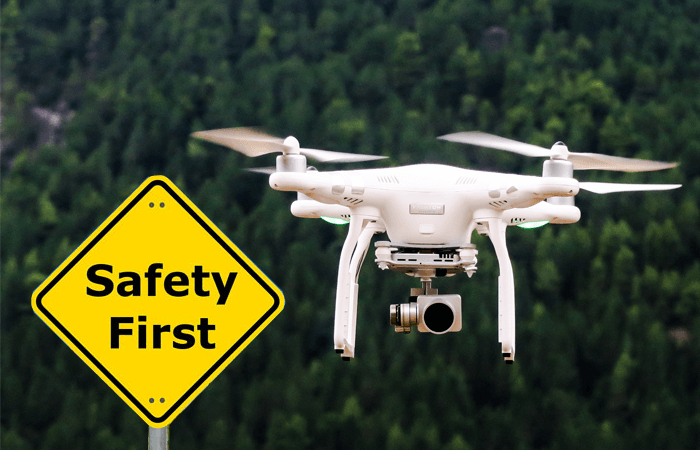
Monitor Battery Levels
- Keep an eye on your drone’s battery percentage throughout the flight.
- Plan your Return to Home (RTH) or landing well before the battery reaches critical levels. A good practice is to land when the battery reaches 20% or higher.
- Avoid flying to maximum range or pushing flight duration to the limit, as this increases the risk of a sudden battery depletion.
Signal Strength and Interference
- Ensure a stable connection between your controller and the drone.
- Avoid flying in areas with high electromagnetic interference, such as near power lines, cell towers, or large metal structures.
- Monitor your signal strength indicator on the controller or app and return to closer proximity if the signal weakens.
Obstacle Awareness
- Continuously scan the flight area for potential hazards like trees, buildings, power lines, or other drones.
- Use the drone’s obstacle avoidance system if available, but don’t rely on it entirely. Stay vigilant and prepared to intervene manually if necessary.
- Be cautious when flying backward or sideways, as many drones lack comprehensive obstacle detection in these directions.
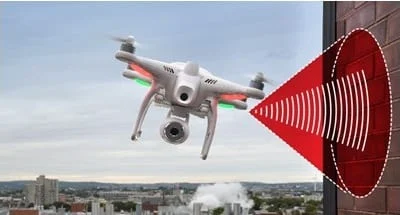
Fly Smoothly and Steadily
- Avoid sudden or aggressive movements that can destabilize the drone or reduce video quality.
- Practice gradual changes in direction, altitude, or speed to maintain control and reduce the risk of accidents.
- In windy conditions, minimize abrupt maneuvers to prevent tipping or loss of stability.
Environmental Awareness
- Pay attention to weather changes, such as sudden gusts of wind or approaching rain, and prepare to land immediately if conditions worsen.
- Be mindful of wildlife, ensuring you do not fly near birds or other animals that may perceive your drone as a threat.
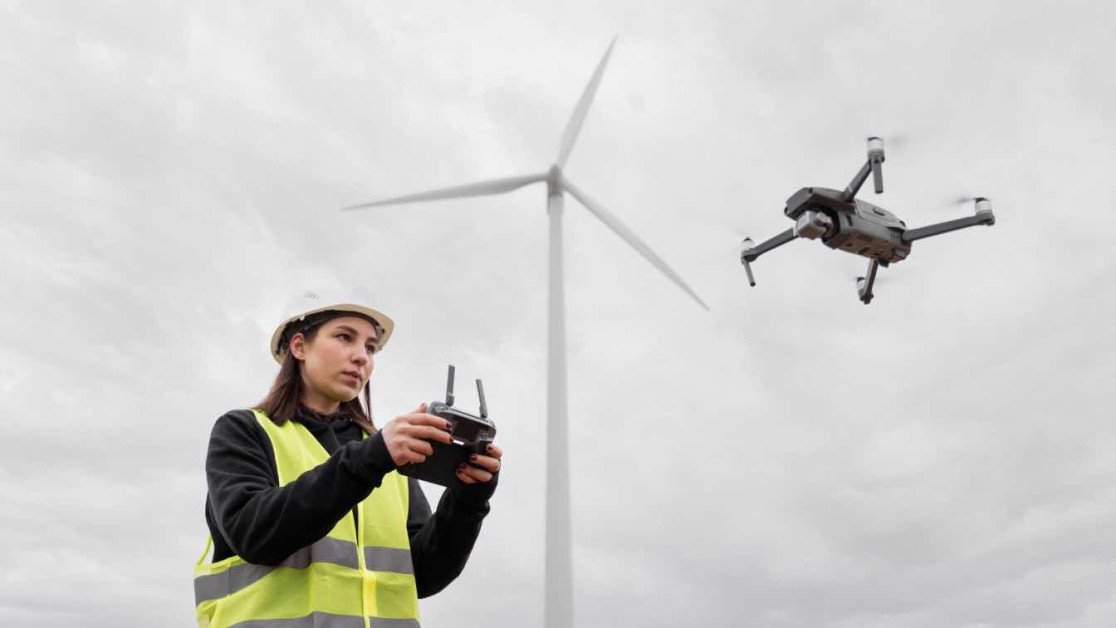
Emergency Protocols
- Be ready to activate the Return to Home (RTH) feature in case of low battery, signal loss, or adverse conditions.
- Familiarize yourself with the Pause button to halt the drone’s movement in emergency situations.
- If the drone becomes unresponsive, remain calm and use manual controls to attempt a safe landing.
Situational Awareness
- Continuously assess your surroundings, keeping track of nearby people, vehicles, or other drones.
- Avoid distractions such as checking your phone or multitasking during flight.
- Use a spotter for additional visual support, especially when flying in busy or complex environments.
Avoid Restricted Areas Mid-Flight
- If your drone’s GPS warns of entry into a no-fly zone, retreat immediately to avoid regulatory violations.
- Stay clear of airports or airfields, where unauthorized entry can lead to severe penalties or endanger manned aircraft.
Altitude Management
- Maintain a consistent altitude suitable for your flight objectives. Avoid sudden ascents or descents, which can confuse the drone’s sensors or create turbulence.
- Adhere to altitude limits to ensure safe and legal operations, typically 400 feet (120 meters) or below in most countries.
Crowded or Confined Spaces
- Exercise extreme caution when flying in tight or crowded spaces. Use slower speeds and precise controls to navigate safely.
- Consider activating obstacle detection systems and manual flying modes to better handle complex environments.
Real-Time Adjustments
- Continuously adapt your flight path based on real-time observations and changes in the environment.
- Avoid flying too far from the take-off point, especially in areas with potential signal interference or limited visibility.
By practicing these in-flight safety measures, you can minimize risks and ensure a successful and enjoyable drone operation. Always remember that safe flying is a dynamic process, requiring constant attention and adaptability to the conditions around you.
Post-Flight Best Practices for Drone Safety
After landing your drone, it’s important to conduct a thorough post-flight routine. This not only ensures your equipment remains in excellent condition but also prepares you for your next flight. These best practices can help you maintain safety, identify potential issues, and extend the lifespan of your drone.
Inspect Your Drone
- Check the frame, propellers, and other components for any visible damage or wear caused during the flight.
- Look for loose screws, cracks, or bent propellers, and replace damaged parts as needed.
- Examine the motors for dirt, debris, or unusual resistance, as these could impact performance.
Battery Care
- Remove the battery from the drone immediately after the flight to allow it to cool.
- Avoid recharging a hot battery, as this can shorten its lifespan.
- Store batteries at approximately 50% charge if they won’t be used for an extended period to preserve their health.
- Inspect the battery for signs of swelling or damage and replace it if necessary.
Clean the Drone
- Wipe down the drone’s exterior with a soft, dry cloth to remove dust, dirt, or moisture.
- Carefully clean the propellers and motors to ensure they are free of debris.
- Avoid using water or harsh chemicals, as these can damage sensitive components.
Review Flight Logs
- Analyze your flight logs to review performance data, including altitude, speed, and battery usage.
- Use this information to identify areas for improvement or anomalies that might indicate a problem.
- Keep a record of your flights for regulatory compliance, especially if you’re flying commercially.
Recharge Equipment
- Charge the drone battery, controller, and any additional accessories like FPV goggles.
- Use only the manufacturer-recommended chargers and avoid overcharging by disconnecting devices once fully charged.
Inspect and Store Accessories
- Examine accessories such as gimbals, cameras, and landing gear for damage.
- Securely store your drone and all accessories in a dedicated carrying case to protect them from physical damage and environmental factors like humidity or extreme temperatures.
Firmware and Software Updates
- Check for updates to your drone’s firmware and companion app.
- Updating software after each flight ensures you’re using the latest features, bug fixes, and compliance standards.
Log Maintenance Needs
- Keep a maintenance log to track any repairs, part replacements, or other interventions.
- Regular documentation helps you stay proactive about servicing and ensures you don’t miss critical updates.
Reflect on Flight Performance
- Take a moment to evaluate your flight. Were there any issues with control, navigation, or environmental factors?
- Use these insights to adjust your flight strategy and improve safety for future operations.
Prepare for the Next Flight
- Restock any items you used during your flight, such as spare batteries, propellers, or tools.
- Organize your equipment so it’s ready for the next operation, saving time and reducing stress during pre-flight preparations.
Debrief with Team Members
- If you’re working in a team, conduct a brief discussion to review what went well and what could be improved.
- Address any concerns or suggestions to enhance team efficiency and safety for future missions.
By following these post-flight best practices, you can maintain your drone’s reliability, extend its operational life, and ensure every flight is as safe and efficient as possible. A consistent post-flight routine not only protects your investment but also reinforces the habits of a responsible drone operator.
Building a Safety Mindset
A safety mindset is the foundation of responsible drone operation. It goes beyond simply following rules and involves cultivating habits, skills, and awareness that prioritize safety in every aspect of your flight. Whether you’re a recreational pilot or a professional operator, adopting this mindset can help prevent accidents, protect others, and enhance the drone community’s reputation.
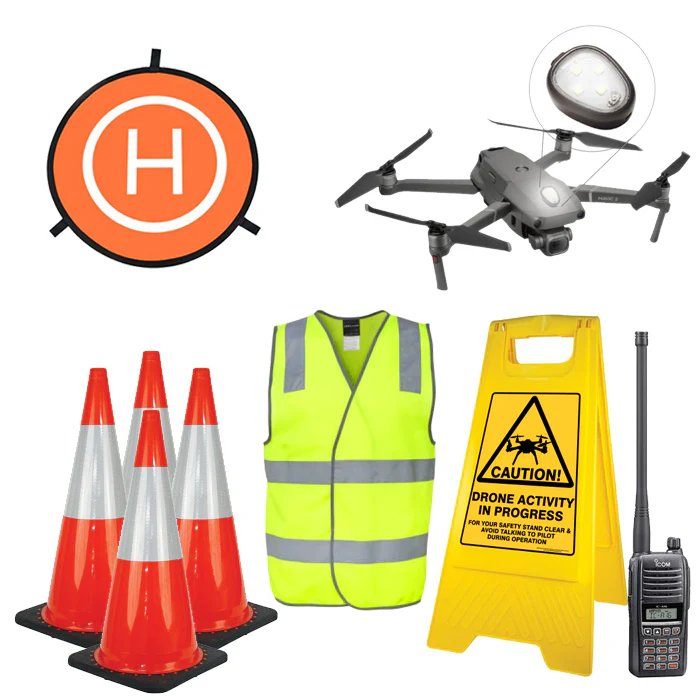
Commit to Continuous Learning
- Stay Informed: Keep up with changes in regulations, emerging technologies, and best practices for drone operation. Aviation authorities, online forums, and training programs are great resources for staying current.
- Participate in Workshops: Attend drone safety seminars or workshops to refine your skills and expand your knowledge.
- Pursue Advanced Certifications: Advanced certifications can deepen your expertise, especially for complex or high-risk operations.
Practice Situational Awareness
- Always be aware of your surroundings, including obstacles, weather conditions, and the presence of people or other aircraft.
- Use a spotter when flying in complex environments to help identify potential hazards.
- Develop a habit of scanning the sky and ground regularly to ensure your drone’s flight path remains clear and safe.
Prioritize Preparation
- Make pre-flight checklists a standard part of your routine. Thorough preparation reduces the likelihood of in-flight emergencies.
- Conduct site surveys before flying to identify potential risks and determine the safest take-off and landing areas.
- Develop contingency plans for unexpected events, such as signal loss, adverse weather, or hardware malfunctions.
Adopt a Conservative Flying Approach
- Avoid unnecessary risks, especially when flying in unfamiliar areas or challenging conditions.
- Fly at lower speeds and maintain higher altitudes when operating in congested spaces to reduce the chance of collisions.
- If something feels unsafe or unpredictable, prioritize landing your drone and reassessing the situation.
Develop Emergency Response Skills
- Familiarize yourself with your drone’s emergency features, such as Return to Home (RTH), Pause, and manual override functions.
- Simulate emergency scenarios, such as sudden signal loss or low battery, to practice quick and effective responses.
- Keep basic tools and spare parts on hand to address minor issues quickly and safely.
Respect Privacy and Wildlife
- Always respect the privacy of others by avoiding flights near residential properties, gatherings, or private events.
- Keep a safe distance from wildlife to prevent stress or harm to animals and protect your drone from potential damage.
- Be aware of local laws protecting privacy and natural habitats, and adhere to them strictly.
Foster a Culture of Safety
- Encourage safety-first practices among fellow drone operators by sharing your knowledge and experiences.
- Report unsafe flying behaviors to local authorities or aviation bodies if necessary to protect public safety and the drone community’s reputation.
- Join drone pilot associations or communities to learn from others and promote responsible flying practices.
Conduct Post-Flight Reflection
- Review each flight to identify what went well and what could be improved.
- Use flight logs to analyze performance data and identify patterns that could enhance safety in future operations.
- Take feedback from team members seriously if operating in a collaborative environment.
Lead by Example
- Adhere to all regulations, even in situations where enforcement may seem lax.
- Use your expertise to mentor new pilots and help them develop safe flying habits.
- Demonstrate professionalism and caution in your flying to build trust within your community and industry.
Stay Calm and Focused
- Avoid distractions during drone operation. Keep your attention on the flight at all times.
- Maintain composure in stressful situations, such as malfunctions or environmental challenges, to make better decisions.
- Practice mindfulness techniques if you find yourself easily distracted or anxious during flights.
By adopting and promoting a safety-first mindset, you not only protect yourself and your equipment but also contribute to the overall success and reputation of the drone industry. A safety mindset is an ongoing process of learning, practicing, and refining your approach to flying responsibly.
Conclusion
Drone safety is more than just a checklist—it’s a commitment to responsible flying that ensures the well-being of people, property, and the drone community as a whole. By incorporating these guidelines and best practices into every flight, you not only protect your investment but also contribute to a positive and sustainable environment for drone operations.
From meticulous pre-flight checks to adopting a safety-first mindset, each step outlined in this guide is designed to help you navigate the skies confidently and responsibly. Whether you’re a beginner mastering the basics or a seasoned professional tackling complex missions, these practices are invaluable for fostering safe and efficient drone use.
Remember, safe flying is not just about compliance with regulations; it’s about accountability, respect for others, and a continuous drive to improve. By prioritizing safety, you not only elevate your skills but also set an example for the growing community of drone enthusiasts and professionals.
FAQs: Drone Safety Guidelines and Best Practices
1. Why is pre-flight inspection important?
Pre-flight inspections ensure that your drone is in optimal condition, reducing the risk of malfunctions during flight. By checking components like propellers, batteries, and sensors, you can identify potential issues before they cause accidents.
2. What is the maximum altitude I can fly my drone?
Most countries impose a maximum altitude of 400 feet (120 meters) above ground level to prevent interference with manned aircraft. Always check local regulations, as altitude limits may vary by region.
3. Can I fly my drone in bad weather?
It’s not recommended to fly in bad weather, including high winds, rain, snow, or fog. These conditions can destabilize your drone, reduce visibility, and damage sensitive components like the battery and camera.
4. What is a no-fly zone, and how can I identify one?
A no-fly zone is an area where drone operations are restricted or prohibited, such as near airports, military bases, or critical infrastructure. Use drone apps like DJI Fly or B4UFLY to identify no-fly zones in your area.
5. How can I avoid collisions with obstacles?
Always maintain a clear line of sight and use obstacle avoidance systems if your drone is equipped with them. Avoid flying in crowded or cluttered areas and scan your surroundings constantly for potential hazards.
6. What should I do if I lose connection with my drone?
Most drones have a Return to Home (RTH) feature that activates during signal loss. Ensure this feature is enabled and set to a safe altitude to avoid obstacles during its return. Stay calm and monitor your drone’s location using the app or controller.
7. Is it safe to fly near people or animals?
Flying over people or animals is generally discouraged and may be prohibited by regulations. Always maintain a safe distance to avoid causing harm or stress, and respect privacy and wildlife laws.
8. How can I prepare for emergency situations during a flight?
Familiarize yourself with your drone’s emergency features, such as RTH and Pause. Practice manual landing techniques, and have a plan for handling situations like low battery, sudden weather changes, or signal loss.
9. Do I need to register my drone?
In many countries, drones above a certain weight must be registered with aviation authorities. Check your local requirements to determine whether registration is necessary for your drone.
10. Can I fly my drone at night?
Night flying is allowed in some areas but often requires additional lighting on the drone and special permissions. Always check local regulations and ensure your drone is visible to avoid collisions.
11. How can I extend my drone’s battery life?
- Avoid flying in extreme temperatures.
- Do not overcharge or fully deplete the battery.
- Store batteries at a 50% charge level if they won’t be used for a long time.
- Reduce aggressive maneuvers during flight to conserve energy.
12. What should I do after landing my drone?
Inspect your drone for damage, clean off any dirt or debris, and let the battery cool before recharging. Review flight logs for performance insights, and store your drone and accessories in a safe, dry place.
13. Do I need a license to fly a drone?
A license is often required for commercial drone operations or advanced flights (e.g., BVLOS). Recreational pilots may not need a license but must still adhere to local rules. Research the certification requirements in your country.
14. How can I improve my drone flying skills?
Practice in open areas with minimal obstacles. Start with basic maneuvers and gradually advance to more complex flights. Consider taking a drone training course to learn advanced techniques and safety protocols.
15. Why is maintaining a safety mindset so important?
A safety mindset helps you anticipate risks, operate responsibly, and make better decisions during flights. It also contributes to a positive reputation for the drone community and reduces the likelihood of accidents or regulatory issues.
To Learn more about acronyms used in this article visit our Drones Acronym Page.